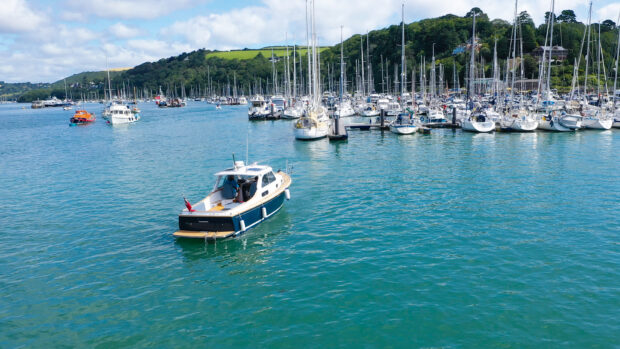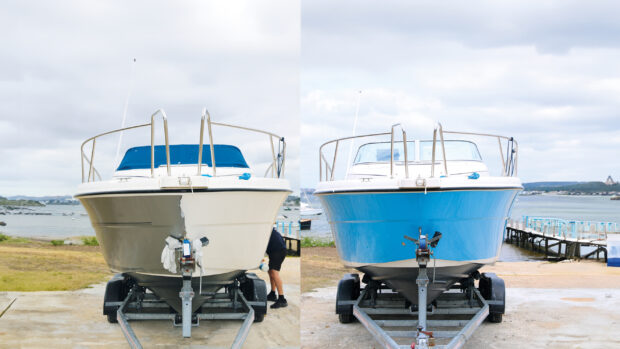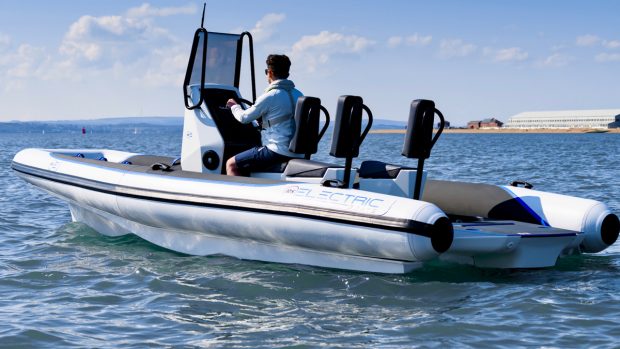Our resident boating instructor Jon Mendez explains the phenomenon of prop walk and how you can use it to your advantage.
When the propeller on a boat is turned by the engine, the majority of the force it produces pushes the boat ahead or astern. However, the shape of the blades also creates a small amount of sideways force which creates a turning effect on the boat as well.
This force has several names – prop walk, propeller effect, transverse thrust – they all mean the same thing but for clarity I will call it ‘prop walk’.
It’s most apparent and easiest to see on a shaft driven boat. You can visualise it by mentally replacing the propeller on your boat with a paddle wheel while viewing it from astern; when the propeller is turning clockwise, so to the right (called a right-handed propeller), it wants to paddle the stern of the boat over to starboard.
Article continues below…

How to berth a single-engined boat: Stern-to method explained

How to: Turn a single-engined boat in a tight space
When moving ahead this also causes the boat to pivot by turning the bow to port. When moving astern the effect is much more pronounced as the wash from the propeller is no longer going over the rudder so you can lose steering.
Now the turning effect of that same right-handed propeller in astern is to push the stern to port – and hence the bow to starboard. All of this happens the other way round with a left-handed propeller that spins anti-clockwise in ahead.
Knowing the rotation of your propeller is fundamental to all manoeuvres carried out on a single shaft boat, especially when going astern. Using this force to help with tight turns rather than hinder them is crucial as it gives you the ability to turn the craft ‘short’ – using the least amount of room.
To find out which way your boat’s propeller turns, while still securely tied to the berth briefly engage astern and see which side of the boat the wash comes out. If it exits to starboard it’s a right-handed propeller, if it exits to port then it’s a left-handed propeller.
Having worked out which way it turns and knowing that its effect is much greater in astern than ahead, it makes sense to always turn the boat using the prop walk effect in astern to push the stern the way it naturally wants to go and balance any fore and aft motion by using ahead and the power of water flowing over the rudder in short bursts to keep the turn going.
On a twin shaft boat, the starboard engine will usually have a right-hand propeller and the port engine a left-hand one. When both are used ahead or astern at the same time their prop effects cancel each other out but when used individually the prop walk of each engine can actually aid the manoeuvring process.
Our How To video series is brought to you in association with GJW Direct.









